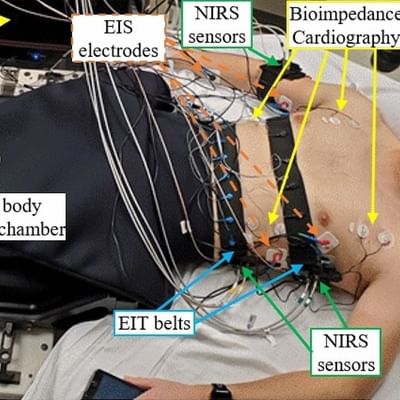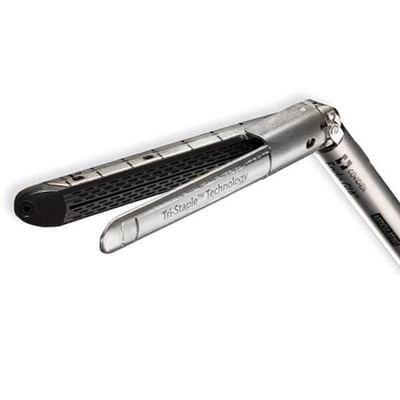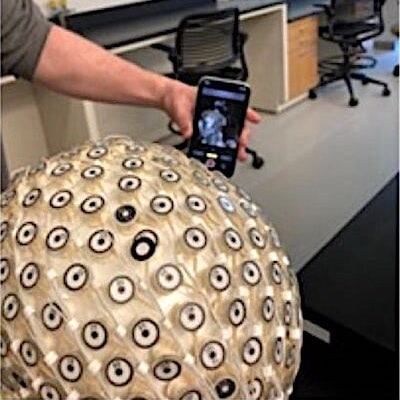- Undergraduate
Bachelor's Degrees
Bachelor of ArtsBachelor of EngineeringDual-Degree ProgramUndergraduate AdmissionsUndergraduate Experience
- Graduate
Graduate Experience
- Research
- Entrepreneurship
- Community
- About
-
Search

Ethan K. Murphy
Assistant Professor of Engineering
Electrical Impedance Imaging and Modeling for Neurological Applications: Stroke and tDCS
Overview
My research primarily involves physics-based electrical modeling, imaging electrical properties with a technique called electrical impedance tomography (EIT), and using a combination of computational techniques to improve these methods for practical biomedical applications. Much of my work involves 3D mesh generation for finite element method problems and fusing data from multiple data sources.
Research Interests
Electrical impedance tomography; data fusion; finite element method (FEM) modeling; noise/data filtering; general numerical methods; magnetic resonance electrical property tomography; electroencephalogram (EEG) source localization
Education
- BS, Mathematics, Worcester Polytechnic Institute 2002
- MS, Industrial Mathematics, Worcester Polytechnic Institute 2002
- PhD, Mathematics, Colorado State University 2007
Awards
- Society of Critical Care Medicine’s Gold Snapshot Award, 2021
- Clinical Poster Award, Northeast Amyotrophic Lateral Sclerosis Conference, 2019
- Best Creative Work, Saratov State Technical University, 2010
Research Projects
-
Electrical impedance tomography in pulmonary and cardiac applications
Electrical impedance tomography in pulmonary and cardiac applications
The most common application, so far, of electrical impedance tomography (EIT) has been pulmonary monitoring of patients. In particular, we have been pursuing EIT for cardiac output monitoring (a related application) and EIT as a surrogate for pulmonary function tests.
-
Combined whole breast ultrasound and electrical impedance tomography
Combined whole breast ultrasound and electrical impedance tomography
Ultrasound is a supplemental screening technique that has good sensitivity in dense breasts, is inexpensive, and is widely available, but unfortunately, it has high rates of false positives. Electrical impedance tomography (EIT) is a second attractive modality that is low-cost and has shown promise for cancer detection and in differentiating fibrocystic tissues from other tissues. Combining automated whole breast ultrasound (ABUS), which is a recent improvement to standard ultrasound, with EIT may significantly reduce the number of false positives of ABUS. If successful, the combined ABUS/EIT system could become an important screening technology for women with dense breasts.
-
Imaging muscle properties with combined ultrasound and electrical impedance tomography
Imaging muscle properties with combined ultrasound and electrical impedance tomography
Assessing muscle health is important diagnostic information in the treatment of numerous peripheral nerve diseases. This project aims to incorporate spatial information from ultrasound into the inverse problem of electrical impedance tomography in order to accurately image the electrical properties of the muscle (under the skin and adipose tissue).
-
Electrical impedance imaging for prostate cancer screening
Electrical impedance imaging for prostate cancer screening
Electrical impedance imaging for prostate cancer screening is the process of imaging non-invasively the electrical properties (conductivity and permittivity) of the prostate and its vicinity using electrodes mounted onto an intracavitary probe.
Selected Publications
- E.K. Murphy, S.R. Bertsch, S.B. Klein, N. Rashedi, Y. Sun, M.J. Joyner, T.B. Curry, C.P. Johnson, R.J. Regimbal, C.C. Wiggins, and J.W. Senefeld, 2024. Non-invasive biomarkers for detecting progression toward hypovolemic cardiovascular instability in a lower body negative pressure model. Scientific Reports, 14(1), p.8719. doi: 10.1038/s41598-024-59139-8.
- A. Everitt, H. Richards, Y. Song, J. Smith, E. Kobylarz, T. Lukovits, R. Halter, and E. Murphy, 2023. EEG electrode localization with 3D iPhone scanning using point-cloud electrode selection (PC-ES). Journal of Neural Engineering, 20(6), p.066033. doi: 10.1088/1741-2552/ad12db.
- E.K. Murphy, J. Smith, M.A. Kokko, S.B. Rutkove, and R.J. Halter, 2024. Rapid patient-specific FEM meshes from 3D smart-phone based scans. Physiological Measurement, 45(2), p.025008. doi: 10.1088/1361-6579/ad26d2.
- E.K. Murphy, X. Wu, A. Everitt, and R.J. Halter, "Phantom Studies of Fused-data TREIT using only Biopsy-probe electrodes," IEEE Trans. Med. Imag., 2020 (accepted).
- E.K. Murphy, J. Skinner, M. Martucci, S.B. Rutkove, and R.J. Halter, "Toward Electrical Impedance Tomography Coupled Ultrasound Imaging for Assessing Muscle Health," IEEE Transactions on Medical Imaging, vol. 38, no. 6, pp.1409–1419, 2018.
- E.K. Murphy, X. Wu, and R.J. Halter, "Fused-data Transrectal EIT for Prostate Cancer Imaging," Physiological Measurement, vol. 39, no. 5, p.054005, 2018.
- E.K. Murphy, A. Mahara, X. Wu, and R.J. Halter, "Phantom Experiments using Soft-Prior Regularization EIT for Breast Cancer Imaging," Physiological Measurement, vol. 38, no. 6, pp.1262–1277, 2017.
- E.K. Murphy, A. Mahara, S. Khan, E.S. Hyams, A.R. Schned, J. Pettus, and R.J. Halter, "Comparative Study of Separation between ex vivo Prostatic Malignant and Benign Tissue using Electrical Impedance Spectroscopy and Electrical Impedance Tomography," Physiological Measurement, vol. 38, no. 6, pp.1242–1261, 2017.
- E.K. Murphy, A. Mahara, and R.J. Halter, "Absolute Reconstructions using Rotational Electrical Impedance Tomography for Breast Cancer Imaging," IEEE Trans. on Med. Img., vol. 36, no. 4, pp.892–903, 2017.
- E.K. Murphy, A. Mahara, and R.J. Halter, "A Novel Regularization Technique for Microendoscopic Electrical Impedance Tomography," IEEE Trans. Med. Imaging, vol. 35, no. 7, pp. 1593–1603, 2016.
- V. Brovko, E.K. Murphy, and V.V. Yakovlev, "Waveguide Microwave Imaging: Solids Volume Fraction of Particulate Materials," Appl. Comput. Electromagn. Soc. J., vol. 30, no. 11, pp. 1161–1167, 2015.
- E.K. Murphy and V.V. Yakovlev, "Neural Network Optimization of Complex Microwave Structures with a Reduced Number of Full-Wave Analyses," International Journal of RF & Microwave Computer-Aided Engineering, vol. 21, no. 2, pp. 279–287, 2011.
- E.K. Murphy and J.L. Mueller, "Effect of Domain Shape Modeling and Measurement Errors on the 2-D D-bar Method for EIT," IEEE Trans. on Medical Imaging, vol. 28, pp. 1576–1584, 2009.








